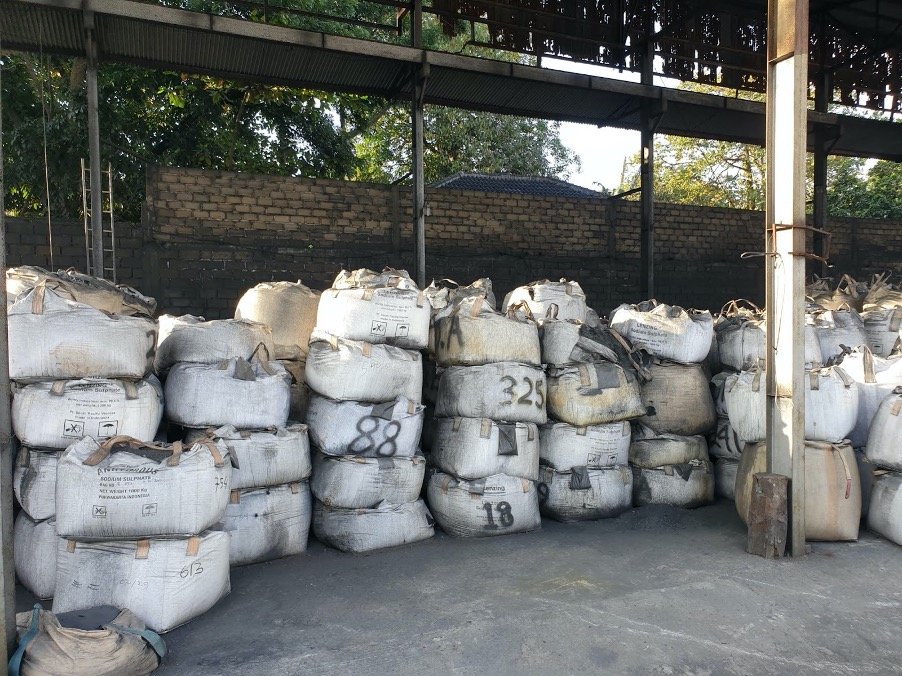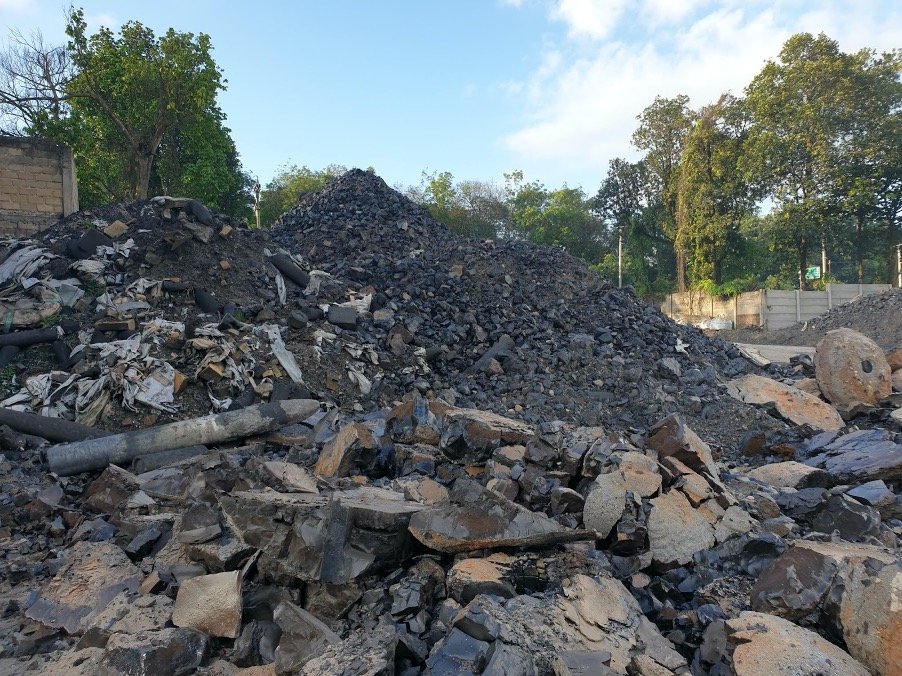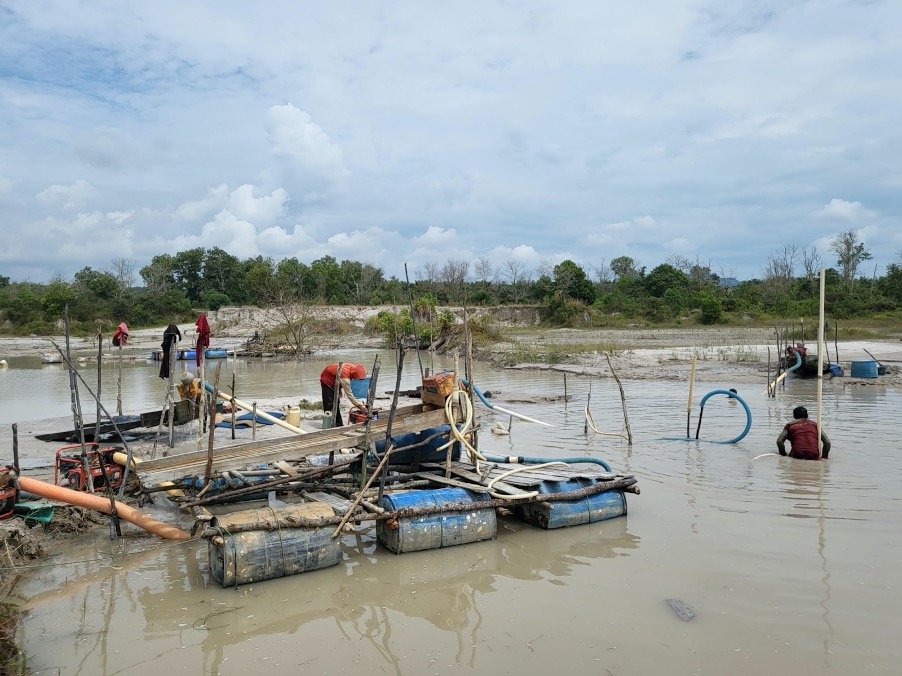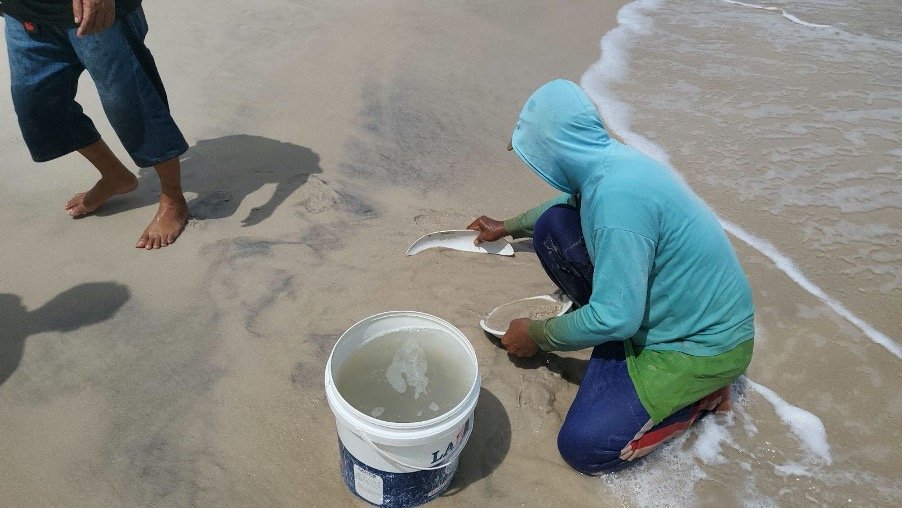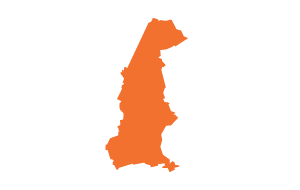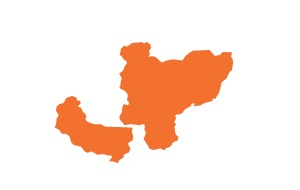TERRITORIAL IMPACT OF GLOBAL EXTRACTION
Biodiversity Loss and Climate Change
In Bangka Belitung Islands Province, biodiversity loss and climate change are highly associated with the growing expansion of formal and informal mining activities and will depend on whether the extraction happens on-shore or off. As to on-shore activities that have long been practiced by both large and small-scale players, the alluvial tin deposits were extracted following the dismantling of vegetation above the upper soil and the removal of the non-tin deposit overburden. The miners have to pour a large volume of highly pressured water over the sediment to separate the heavy tin ore from the rest of materials. As a consequence, the used water and sediment from this washing process create acidic material with a pH below 3 which brings negative effects on flora and fauna.
The acidity changes the vegetation structure and composition, leading to alarming and significant damages to the biophysical aspects of land resources, including the changes in soil texture, loss of soil fertility, deterioration of soil structure, loss of soil organic matter, also decreased soil productivity and environmental quality in terms of changes in land topography and morphology. This causes the loss of biotas that are crucial in providing environmental services i.e. soil stability and provision of forest products, as well as maintaining carbon sequestration and hydrological cycle. In addition to floods and damaged infrastructure, rivers that receive tin sedimentation have nearly 30% less fish species compared to a river free from the activities.
Meanwhile, offshore tin mining is found to reduce water quality and causes a 40% reduction of the number plankton species: the number of species of seagrass in mined water was about 70% of the number in less mined one; the number of coral reef–associated fish in mined water was 30% of that in less mined ecosystem; coral reef life coverage was less than 25% in mined water compared to more than 90% in less mined environment. These numbers are significant as the Islands are known for its various coastal resources, i.e. coral reefs, mangrove forests, and seagrass beds.
The tin ore processing also contributes to a significant number of carbon emissions. Although it is often understood as a mineral that is relatively easy to be mined, the tin processing requires a lot of other materials during its smelting and refining process to reach 99,9% purity level. Among others are coal, limestone, crystallizer, and aluminum in the making of pure tin ingots. While those materials are carbon-intensive, tin is increasingly associated and integrated to sustainability discourse and technological advancement of global energy transition. This showed that decarbonization in the tin mining sector is mainly thought of in terms of energy generation, but the smelting and processing of tin requires quite a lot of coal and other minerals. The use of aluminum, for example, can also be connected to the circular economy narrative that could lead to the greenwashing of extractive industries. More attempts to understand the decarbonization of tin mining industries is needed to see the connection with the global energy transition project.
The waste management from the tin production is problematic. Actors often address the waste as “tin slag”. The private tin company called what they did as “material balance” as they have a very well documented log sheet of not only production, but also the slag. The company has an exact amount of how many kg/tons of waste they produce from the smelting and refining process. However, the pile of waste is located in their backyard and keeps increasing over time. The company should keep the waste as it is not allowed by law to move or transport the waste to anywhere outside the company for its radioactive contents. There are also yet policies or technologies that could process the waste to a more friendly or useful form. As a consequence, the company needs to continuously request for a land expansion permit to store the waste.
In the case of palm oil plantations in West Kalimantan, the land conversion is of significant magnitude. Particularly with regards to the transformation of land into plantation areas. According to a study conducted in 2016, Indonesia underwent a significant deforestation event, resulting in the depletion of around 50% of its overall forested areas due to palm oil expansion.
The growth of oil palm plantations has resulted in a significant loss of biodiversity. Several prominent issues include the degradation of orangutan and tiger habitats, along with the adverse impacts on snake and bird populations. Expansion of oil palm plantation also obscures rights and local authority owned by indigenous peoples. This has an impact on changing the role of indigenous peoples along with their rights which are now being undermined.
Palm oil stands as a prominent commodity within the Indonesian economy. President Joko Widodo has designated palm oil as “green gold” due to its significant strategic economic value. This particular commodity has superior competitiveness when compared to other commodities within the agricultural sector. By the end of 2022, the export value of this particular commodity has been estimated to reach USD 29.66 billion, indicating a substantial growth compared to the figures recorded in 2020 (See below). However, the massive expansion of palm oil has also caused significant losses, especially to the environment and also reduced Indonesia’s natural wealth. Conflicts between communities living around the plantation area and wild animals have also increased with the opening of new oil palm plantations.
Environmental Justice
The massive expansion of tin mining activities and palm oil plantations have led to the growing inequality and marginalization in the decision making process, environmental protection, and conflict management. Recognition of who is allowed to mine the tins or plant the palm oil, who can process them, and how they are transferred along the supply chain is subject to various mechanisms of exclusions. While big companies have the leverage of being issued a license by the national authorities, the local communities are constantly vulnerable to policy raids due to their illegal practices of tin mining. With no safety mechanism in their mining procedures, the artisanal miners often have to bear all the risks and dangers out of mining activities while supplying the big companies with raw materials.
As most of the land for tin mining activities in Bangka is concession land owned by PT Timah Tbk as a state-owned company, artisanal miners and smaller players have to be in partnership with the company to be able to continue their production. This partnership gives permits for small miners to be able to mine in PT Timah’s concession area, and obliges them to sell the extracted tin ore to PT Timah at a set price. However, there is a quite huge price discrepancy for the ore selling. The price set by PT Timah is often cheaper than the price offered by private collectors or private smelter companies. The small miners have to accept these disadvantages nevertheless, in exchange for the safety and guarantee to their operations provided by the company through the partnership. Their relative dependency to the company, however, exposes them to various layers of risks associated with one-sided regulation changes by the government and the industry.
The presence of migrants who are brought by investors or businessmen to work in their mining activities also creates social tension with the local communities. This provides limited opportunity of employment for the locals and leave them, even women, with only several supporting activities for the mining operations, i.e. women and children doing “ngreman” where they have to offer some services or meals to the miners in exchange for tin ores, or that the locals have to individually looks for a tin leftover from the offshore company-owned platforms and sell them in a very low price.
At the same time, however, both small and large-scale mining operations decrease the number of fish caught by the local fishermen community. With no guarantee of good catch, it is no wonder that a significant number of fishermen decided to stop their fishing activities and shift to become miners instead. This is why offshore tin mining is perceived as both damaging the coastal environment and threatening the sustainability of fishery sources and traditional fishing activities.
Palm oil smallholders, on the other hand, are struggling over the funding to intensify their production as designated by the government. The issue of land ownership is a major problem for the smallholders as they need to prove their entitlement to the land in order to get access to financial resources, procurements, and knowledge. While they are the main economic drivers to eradicate poverty in remote rural areas—an issuewhich has yet to be fulfilled by the national development agenda—smallholders face difficulties to meet both global and national sustainable palm oil standards, i.e. Roundtable for Sustainable Palm Oil (RSPO) or Indonesian Sustainable Palm Oil (ISPO). This often led them to be alienated from markets that demand the fulfillment of such sustainability aspects in the whole production chain. Big palm oil companies, with large capitals and investors, have resources and a strong capacity to demonstrate compliance to those sustainable practices’ standards, while smallholders have to operate with very limited capital and access to layers of facilities that might support them to sell their product better.

